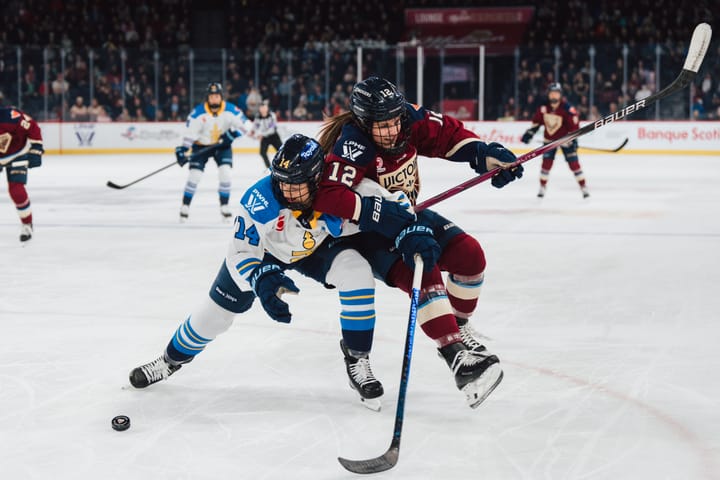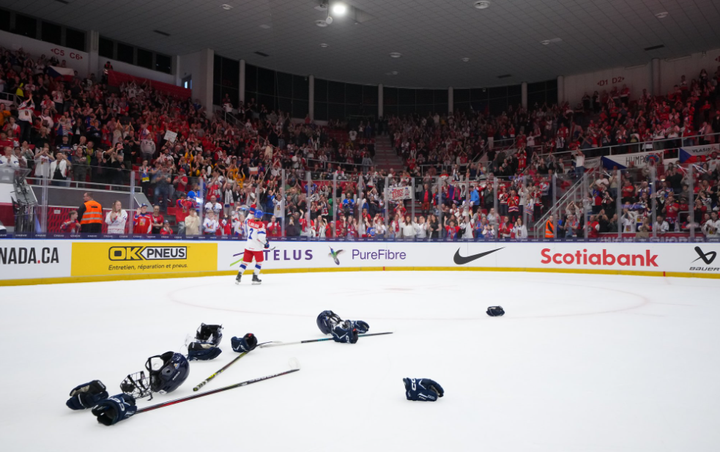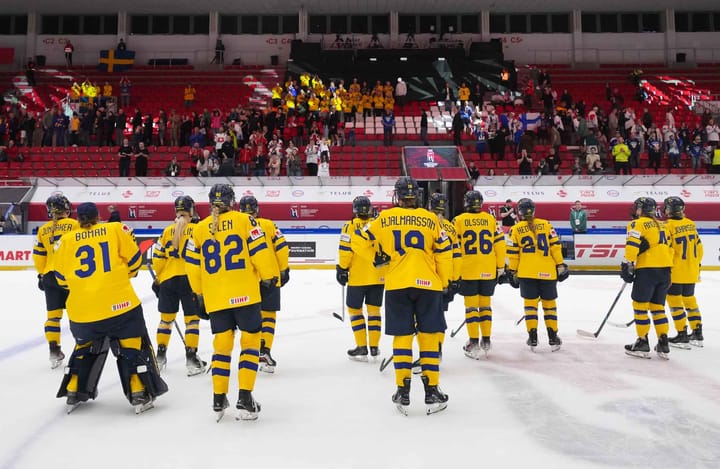NCAA Year in Review: Brown, Dartmouth, Union, Yale
A look back at the 2018-19 season for these ECAC squads
As the NCAA women’s hockey season winds down, writers William Whyte and Gabriella Fundaro are taking an in-depth look at how each team has shaped up in 2018-19. In this post, we break down the four teams that missed out on a playoff bid in the ECAC.
Brown
William: Brown started the season in historic style: as I noted at the time, the last time Brown went 3-0-0 to start a season was 2000-2001. Those three victories? Minnesota 3-2; Wisconsin 5-3; BC 7-0. And then a loss to Dartmouth! If you count non-D1 opponents, the only seasons Brown had a better start than this year’s 3-0-0 are 92-93 (8-0-0), 90-91 (6-0-0), and 1976-77(!) (5-0-0). They followed it up with victories over Cornell and Colgate in a single weekend, and then everything went a bit Brown.
Over the summer they had fired and replaced the entire coaching staff, which clearly made a difference, along with gaining a crop of freshman talent who weren’t resigned to losing. Brown obviously has a talent gap that’s hard to make up as an Ivy that doesn’t give athletic scholarships and whose endowment is relatively small, making it hard for it to give financial aid as well. Do you think there’s anything Brown can do to recapture the lightning in a bottle they had at the start of this season? And how does Brown’s mini-turnaround compare to other programs you can think of that have turned over their coaching staff in the recent past?
Gabriella: If this same season is recent enough for you, we’ve seen a really nice turnaround from RIT in Chad Davis’ first year behind the bench. The Tigers were 4-27-3 last year and finished dead last in the CHA, and they now stand at 12-15-5 with a good hold on fourth in the CHA. Colgate is another team that comes to mind, though that program’s turnaround didn’t just happen in one season. The Raiders were regularly a sub-.500 team before Greg Fargo became head coach 2012-13. It took a few years, but they’re now a serious conference contender and have hit the 20-win mark for the fourth straight year.
I think Colgate may be a team that Brown could look to in terms of capturing that lightning in a bottle and building a serious contender. The Raiders don’t have the same lengthy women’s hockey history, but Colgate is also a small school that has found a way to compete for top recruits. And that’s definitely the most important aspect for head coach Carisa Wahlig and her Brown team. Outside of trying to draw top talent to the Bears, which likely won’t happen immediately, there’s a lot to be said for bringing in players who can execute what the coaching staff is trying to do, and who buy into the culture they’re creating.
Stick taps: Brown’s weekend sweep over Cornell and Colgate back in November is an obvious bright spot this season. Brown had never before defeated two ranked opponents in the same year, let alone the same weekend.
Losing an edge: December onwards, unfortunately.
Back-to-back wins over ranked opponents…check!! ✅ Bears defeat No. 6/6 Cornell, 4-3! #GoBruno pic.twitter.com/0wZbGSrwkn
— Brown Women's Hockey (@BrownWHockey) November 3, 2018
Dartmouth
William: It’s easy for us to forget, but Dartmouth was a powerhouse until quite recently. Their last appearance in the ECAC tournament was in 2015 as eighth seed, but they had home ice for that tournament as recently as 2012 and made the NCAA tournament in 2011. With Gillian Apps on the team, they made it to the Frozen Four three years running in 2003-05. In recent years they’ve built themselves from the goal out, with first Robyn Chemago and then Christine Honor. But when I watched the victory over Clarkson I saw a hard-working, though maybe not quite fast enough, team that maybe has a right to feel that it should be doing better than it is. What do you think is wrong with Dartmouth and do you think they can turn it around?
Gabriella: I think, for starters, they haven’t been able to grab as much talent as their competitors in recent years. Freshman Jess Forcey is their lone alumna of an Under-18 national team (Team Canada). But it’s still fair to say this roster is splashed with high performers. Christina Rombaut, Tess Bracken, Sydney Hill, Chloe Puddifant, and Rose Falzone all have experience competing at the Canadian Under-18 National Championships. Rookie Lotti Odogna is a member of the Hungarian National Team, and classmate Sara McClanahan is a former U.S U18 Selection Camp attendee. As you said, they’re a hard-working team, and committed on the defensive side of the puck. Since getting head coach Laura Schuler back from her duties with Canada’s Olympic Team, the Big Green have gone from yielding 3.63 goals per game in 2017-18 to 3.03 goals per game in 2018-19. They’ve also been able to improve their shots on goal differential; last season, they were outshot an average of 13.81 per game, and this season saw that number improve to a differential of minus 4.55.
But while I think Dartmouth can be competitive as a team, they’re lacking a high-caliber player who can make or break games for them. Individually, nobody on the roster scored at even a half a point per game pace this season. The Big Green will need to either develop that player or bring her in to sneak inside the ECAC playoff bubble within the next few seasons. Knowing that, do you see them as trending upwards yourself?
William: It feels like things are getting tougher for the minor Ivies, Brown and Dartmouth, on the recruiting side. Success attracts success, and if you don’t have success, at least you need a strong turnaround story. I would say Dartmouth’s best chance is to try to land an elite goalie and use her to convince skater recruits that a turnaround story is at least plausible. That positive shot differential also gives them hope for next season.
Stick taps: That victory over Clarkson.
Losing an edge: The team’s leading scorer this season was Tess Bracken, a senior defender who won’t be returning next year. For a team searching for offense and consistent scorers, that’s not a great sign.
Great win for our seniors tonight beating Clarkson at home on senior weekend!! #upupbiggreen pic.twitter.com/P2vEU818CT
— Dartmouth WHockey (@Dartmouth_WIH) February 16, 2019
Union
William: Poor Union. Yes?
Gabriella: Yep, this was a tough one for the Dutchwomen, who had the worst winning percentage in Division I excluding Holy Cross. It looked Union was gaining a bit of traction under third-year head coach Josh Sciba, going from five wins to seven in 2017-18, but they posted a 4-28-2 record this season.
There is obviously quite a bit of work to do for this program to move into the playoff hunt in the ECAC. They lack depth in all areas, as well as a player with a truly dynamic skillset. But freshman Grace Heiting ended up tied for the team lead in goals, with five, and finished third on the squad in points with 10. Any other bright spots for this Dutchwomen team?
William: They can be proud of a win over this year’s very solid RIT, and a decisive win over Dartmouth the weekend before Dartmouth shocked Clarkson. Union should have a lot of things going for it: it can give scholarships, it’s not ridiculously remote, and they have a memorable national championship win for the men’s team in the recent past. Their persistent weakness feels like a failure of institutional support for women’s hockey. Do better, Union!
Stick taps: Union notched four goals in a win over Dartmouth two weeks ago, their highest offensive output of the season.
Losing an edge: A 7-0 loss to Connecticut at the end of October was tied for their biggest deficit of the season, and was especially tough as it came against a sub-.500 team from outside the conference.
Murray's 60-Save Effort Not Enough on Senior Day in 2-1 Loss to #4 Cornell https://t.co/GMVb9fbPwH
— Union Women's Hockey (@UnionWHockey) February 23, 2019
Yale
Gabriella: The Bulldogs stayed about even with where they were tracking in 2017-18, so it’s not really a surprise to see them out of the ECAC playoffs again. Their eight wins this year were the fewest they’ve had since going 5-21-3 in 2012-13. Back in 2014-15, Yale posted a .500 record, but weren’t able to string that into success for multiple seasons. It does seem like they could turn a corner again, though, even if it didn’t happen this year. Rookies Rebecca Vanstone, Claire Dalton, and Charlotte Welch led the team in scoring, and another rookie, Emma Seitz, was the highest-scoring defender. Their power play took a step back this season, though, going from 22.8% to 15.4%, and last year’s leading scorer, Greta Skarzynski, managed only 11 points this season. It seems like a rising young core could be reason to believe they’ll turn it around even as quickly next season. How would you measure where the Bulldogs are at now, and what their potential is going forward?
William: Yale have always been on the bubble between being a good bad team and a bad good team and this year was no exception, with that huge win over Clarkson showing what the team is capable of. They’ve made the ECAC tournament three of the last six seasons. Every so often they get a highly touted recruit -- Swiss National Team player Phoebe Staenz was one in the recent past. It seems like a program that’s positioned to do a lot better than they have done in the recent past. On the few occasions I’ve seen them play they’ve seemed like quite a chippy team, and I wonder if that’s made it hard to get skill recruits. What’s your take on their skill level?
Gabriella: One thing that seemed to hurt Yale in the ECAC picture was a shortage of elite goaltending. Junior Tera Hofmann posted a .914 save percentage while facing an average of 30 shots a game, which is respectable, but nowhere near the level of goaltending dominance delivered by other bottom-half teams like Harvard and RPI. The Bulldogs finished four points out of a playoff spot, behind eighth-seed RPI, so is it fair to say that’s where the margin of error lies?
William: It’s interesting you mention RPI: since the NCAA era started in 2001, 2007 is the only year that both Yale and RPI have made the ECAC tournament. There’s space for only one of them and in those circumstances goaltending can make the difference, especially if your goaltender is Lovisa Selander. But my hunch is that Yale’s problems are probably more on the blueline than in goal. Yale has a tradition of goalies who don’t look all that much on paper but really pass the eye test: remember Jaime Leonoff, who seemed just okay for Yale but lit up the first season of the NWHL for the Whale. As for whether they can turn it round, of all the teams that went out this week Yale seem both to be closest to being good, and being most puzzling as to why they consistently aren’t. Maybe a coaching change would help.
NO. 3 GOES DOWN!@YaleWhockey upsets No. 3 Clarkson, 5-1.#NCAAWHockey pic.twitter.com/9PCNaawNuF
— NCAA Ice Hockey (@NCAAIceHockey) November 18, 2018
Stick taps: Yale earned a huge win over Clarkson back in November. To that point, the Bulldogs had only recorded a win against Union.
Losing an edge: A 5-1 loss to Vermont after losing the previous four was a low point in their season. Giving up seven to Minnesota in the midst of that losing streak was probably not fun, either, but credit to the Bulldogs for bringing a good amount of fight in ECAC play. Their biggest conference loss was probably a 4-0 shutout to Cornell back on Feb. 16.





Comments ()